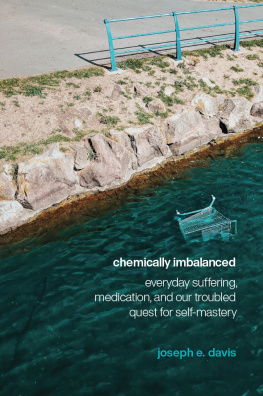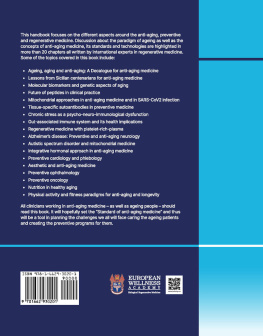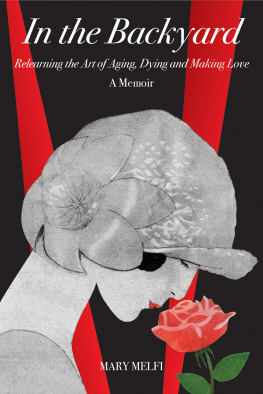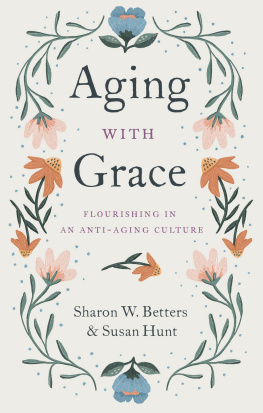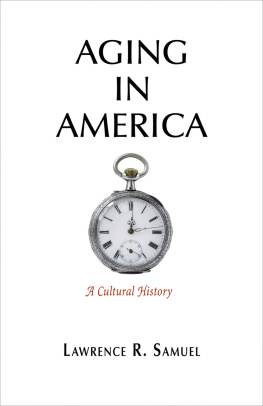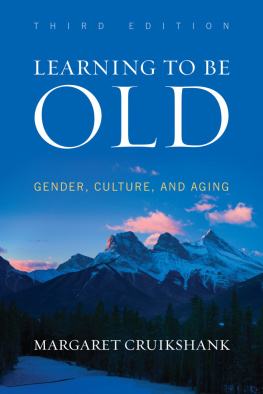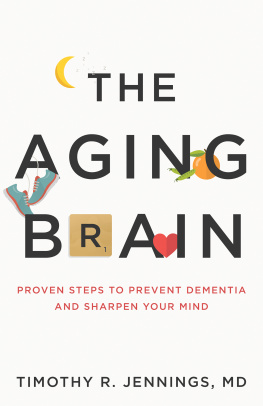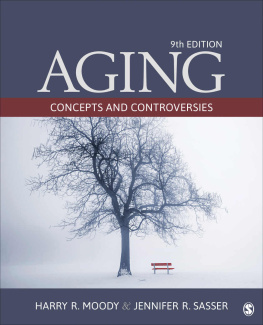Landmarks
Page-list
the evening of life

Copyright 2020 by the University of Notre Dame
Notre Dame, Indiana 46556
All Rights Reserved
Published in the United States of America
Excerpts from W. B. Yeatss Among School Children and Sailing to Byzantium in chapter 4 are printed with the permission of Caitriona Yeats.
Library of Congress Control Number: 2020940875
ISBN: 978-0-268-10801-4 (Hardback)
ISBN: 978-0-268-10802-1 (Paperback)
ISBN: 978-0-268-10804-5 (WebPDF)
ISBN: 978-0-268-10803-8 (Epub)
This e-Book was converted from the original source file by a third-party vendor. Readers who notice any formatting, textual, or readability issues are encouraged to contact the publisher at
CONTENTS
ACKNOWLEDGMENTS
In March of 2018, we editors of this book held a conference on the ethics of later life at the Institute for Advanced Studies in Culture (IASC) at the University of Virginia. Many of the essays published as chapters here were first presented at that conference, with others prepared for this book. We owe a special debt to all of the conference participants. Given a storm that hit Virginia the day of the conference, many underwent heroic journeys just to be present. We thank those who prepared essays, including Thomas Pfau (whose paper is being published elsewhere), for their careful scholarship and generous responsiveness to the feedback of the conference discussants. The discussants were Anne Allison, Daniel Becker, Tal Brewer, James Mumford, China Scherz, and Jarrett Zigon. Their incisive comments on individual papers and vigorous engagement throughout the conference contributed much to the work that is found here.
We would also like to thank our colleagues in the Picturing the Human colloquy at the IASC Tal Brewer, Matthew Crawford, and, especially, Justin Mutter as well as Travis Pickell, for help in the initial work of conceptualizing the conference. The support of the IASC was critical, and, as always, we thank James Hunter and Ryan Olson. Kelly Blumberg provided first-rate administrative support and, along with Donita McCormick-Fortune and Vivienne Smith, saved the day with flexible and creative solutions to the many logistical challenges caused by the bad weather.
Kevin Aho, Wilfred McClay, and Bryan Turner were not able to attend the conference but subsequently prepared essays for this volume. This book is much stronger for their signal contributions.
We greatly appreciate the enthusiastic support of Stephen Wrinn, director of the University of Notre Dame Press, and for all his advice. We thank the three anonymous reviewers for the Press, from whose thoughtful and detailed comments we profited. And we would like to express our gratitude to Mariele Courtois for her careful editorial assistance and to Marilyn Martin of the Press for her graceful copyediting.
Immediately after the conference, somewhat more popular versions of the essays by Davis, McClay, and Mutter were published in the Fall 2018 number of the IASCs journal, The Hedgehog Review. We thank the editors of the Review, whose helpful editing was largely incorporated into the versions of the essays published here.

Introduction
Toward an Ethics of Aging
JOSEPH E. DAVIS
At other times and in other places, traditional ways of life, social classification, and metaphysical order gave shape and coherence to the course of life. The periods of aging, decline, and the approach of death were especially critical. They involve some of the most complex and unsettling aspects of human experience, and so the need for a defining community to provide direction and meaning was most acute. Many social and cultural practices, such as rites of passage, kinship networks, filial duties to ancestors, hierarchies that honor wisdom, social customs that superintend grief, and arts of suffering and dying, provided support and mediation for this time of life. In our liquid times, by contrast, both in the Western world and beyond, common symbols and shared traditions of old age have weakened or disappeared altogether. The meaning of the evening of life has become more subjective and private.
The task of preparing people for their later years, once a central cultural and philosophical task, has correspondingly waned. While the ideal form of character in the face of aging and death has varied by time and school of thought, social and cultural goals have nonetheless been broadly similar. or assisted suicide to see our communal and ethical quandary. We have precious few resources for even thinking about the enduring questions of a good old age, its meaning as a distinctive phase in the life course or stage in lifes pilgrimage, and how we might prepare for and embrace the twilight years of life.
Our cultural impoverishment is rooted, most fundamentally, in a deficient conception of the person in society. Our dominant image of persons as free and unencumbered agents, as masters of choice, while inadequate at every stage of life, is especially detrimental in the last. Liberal, autonomous individualism provides virtually no criteria to inform our choices beyond personal preference. It situates us under a regime that effectively fixes aging and death as realities to hide; works to undermine our ability to cope with our finitude and inevitable decline; makes it difficult to sustain a valued sense of self in the face of dependency, disability, and an aging body; and works against a positive conception of living in older age. It is a regime that offers few grounds for social solidarity across the generations or reasons to strengthen it.
In our moment, the societies of the industrialized world urgently need an ethics of aging that centers on the question of a good human life in its later years an old age that is lived well and that goes well.
Toward such an ethics, this book is an intervention.
Old Age as a Problem
No matter how we mark its beginning, old age, as the English sociologist John Vincent has said, is always the period of life before death.
Aging is both an individual and a social phenomenon. People are living longer than they used to, and because fewer children are being born, the population as a whole is aging. The age structure of most industrialized countries, which used to be in the shape of a pyramid, with relatively few people of old age at the top, is slowing becoming a rectangle, with the number of people alive at older ages slowly coming to mirror the number of those alive at younger ages.
Despite the fundamental importance of aging to life and the shifting demographics of society toward old age, there is a surprising dearth of ethical attention to aging. No field of moral inquiry is designated as an ethics of aging. but we also treat old age primarily as a social problem, approaching aged and dependent persons as ones to conceal or avoid. This stage of life is shrouded with an essentially negative veil, as many of the following chapters, beginning with Part I, will document.
In the face of an aging population, some speak of a demographic time bomb and apocalyptic demography. These and other such developments in the United States and elsewhere have created a sense of crisis, casting aging and aging persons as dilemmas for others.
Our dominant cultural narratives of old age, especially but by no means only in the United States, are also negative, framed most commonly in terms of deficits. Our fluid, shifting culture and practice of liberal individualism make it particularly hard for us to face our finitude and identify with those who remind us of it. Much of what we mean by our celebrated autonomy is a form of social organization and policy that encourages us to live so as to repress and deny many features of the human condition, such as our dependence on the care of others and the vulnerability of our bodies. In so doing, we imagine that we are free of such realities, independent of those who sustain us, and even that we sit as the creators of the gifts we receive. This notion of autonomy provides no meaningful terms for expressing boundaries or limits or frailty or unchosen obligations or solidarity. It presupposes a kind of immortality in its explicit future orientation and in its implicit denial of the form given to life by the necessity of death. This practice of detached self-sufficiency shapes how we envision ourselves and sets the norms and expectations by which we measure our experience and approach the world.


